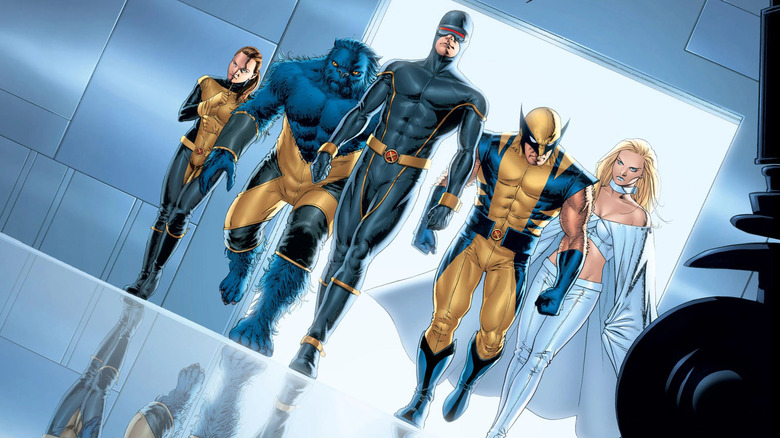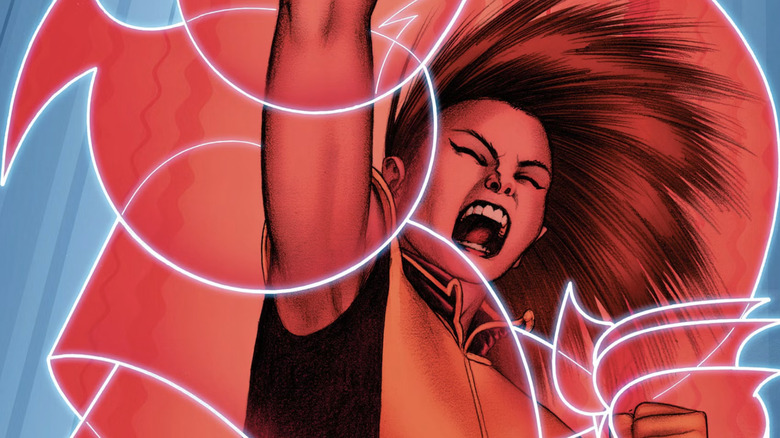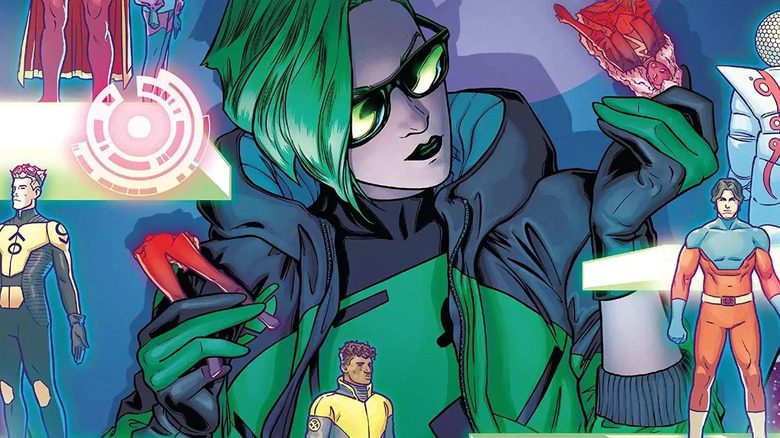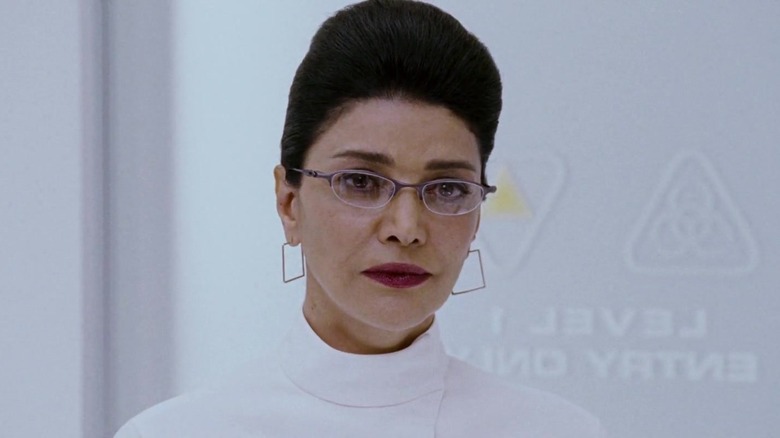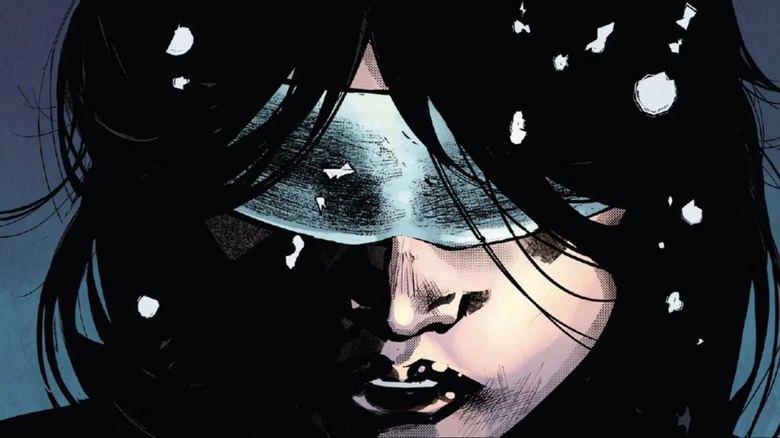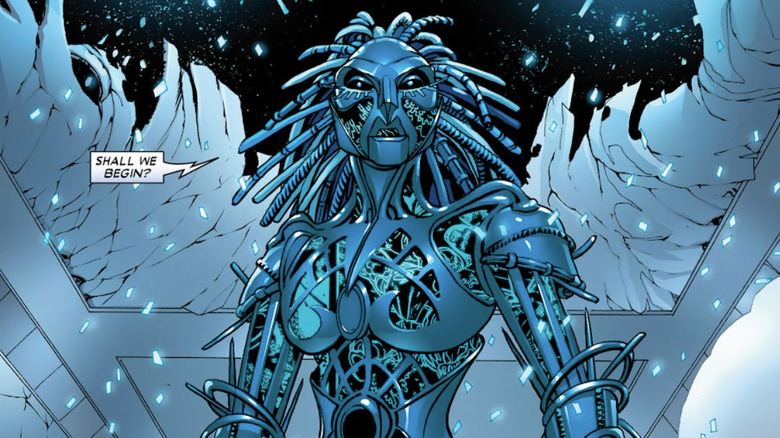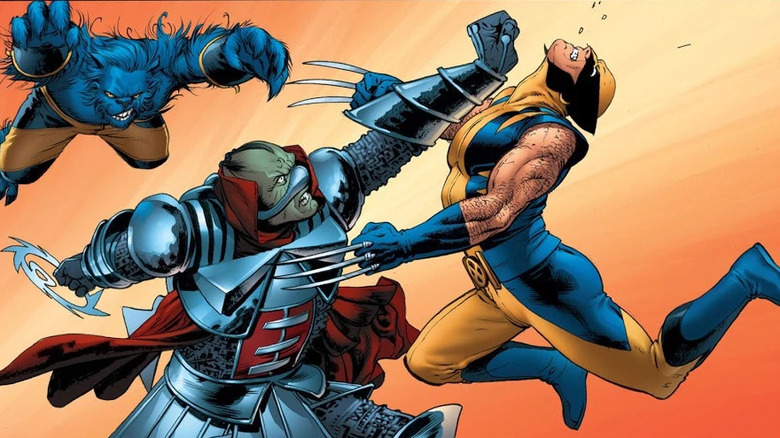All The X-Men Characters Created By Buffy Creator Joss Whedon
The origins of "Buffy The Vampire Slayer" begin with the X-Men. A young Joss Whedon read their comic adventures, penned by Chris Claremont, and cites them as an influence on his work; teen heroine Buffy Summers herself is in the vein of Kitty Pryde/Shadowcat.
From 2004 to 2008, Whedon wrote the ongoing comic "Astonishing X-Men," teaming up with artist John Cassaday. Consider the timeframe: "Buffy" and "Angel" had wrapped as classics, "Firefly" was a freshly canceled-too-soon martyr, and Whedon hadn't cracked into the blockbuster movie mainstream with "The Avengers" yet, and allegations of his abusive behavior on set hadn't yet been publicized. His writing an "X-Men" comic felt like nerdy stars aligning.
Is "Astonishing X-Men" worth checking out? It's short and self-contained, which are rare blessings in superhero comics. Whedon also works overtime to repair the reputation of Scott Summers/Cyclops. In the concurrent "X-Men" movies, he was used only as Wolverine's stick-in-the-mud foil; in "Astonishing X-Men," Cyclops is a strong leader and man of action. Whedon knows how to write big moments to sell that characterization, and Cassaday's art completes those money shots.
Of course, no story is exempt from criticism. Whedon's run followed Grant Morrison's 2001-2004 "New X-Men." He used mostly the same cast as "New X-Men" (Cyclops, Wolverine, Beast, and Emma Frost, adding Kitty Pryde and Colossus while excluding Jean Grey, who died at the end of Morrison's run) and built on its story threads (the Scott and Emma romance, the return of Morrison-created villain Cassandra Nova, etc.). Whedon's "X-Men" is a much more conventional superhero book, though, down to the X-Men going back to their old costumes. Morrison urged experimentation to win new readers, while Whedon hit Claremont's beats to tell the X-Men story he'd wanted to as a kid.
Even so, Whedon and Cassaday did create some new characters along the way.
Armor/Hisako Ichiki
X-Men stories vary in how much of a school Xavier's School for Gifted Youngsters is. Is it an actual school for mutants or just a cover for the X-Men's home base? Whedon went with the former interpretation, and one of the most memorable moments in his first issue is Emma Frost calling a school assembly and shocking the students with a holographic Sentinel attack. The first lesson? Humans will always hate mutants, and they must remember that to survive.
The primary student character in Whedon's run is Hisako Ichiki, a Japanese teenage mutant with the ability to surround herself in a suit of armor made from red psychic energy. In a nod to her country of origin, the armor often looks like an anime mech.
"Astonishing X-Men" is a coming-of-age story for Hisako; Wolverine takes her under his wing, like Kitty and Jubilee before her. By the end of the series, she's no mere student, but a bona fide X-Man code-named Armor. The final issue of Whedon's run, "Giant-Size Astonishing X-Men," concludes with a montage-style panel arrangement showing what each of the main cast is up to, which reveals that Armor keeps training with Wolverine.
Armor has remained an X-Man since. She's even set to be the star of "Ultimate X-Men," a new comic coming in March 2024. Armor's new adventures will be written and drawn by Peach Momoko, famous for her "watercolor manga" art style.
Abigail Brand
The most enduring creation of Whedon's Astonishing X-Men is Abigail Brand, director of S.W.O.R.D. (an offshoot of S.H.I.E.L.D. focused on extraterrestrial affairs). Like Nick Fury, Brand is a manipulative spymaster and even when working with the heroes, she's running her own agenda. Usually, said agenda is securing Earth's place on the galactic stage, which means averting any alien invasions before the aliens can become a power player on the planet.
Brand's interest in the worlds beyond Earth stems from her being half-alien herself (her real last name is Thanriaguiaxus). Her green hair is a sign of her heritage, but her ability to create green flames in her hands is not; on her human mother's side, she's a mutant just like the X-Men. She even hooks up with Beast, her alien genes giving her a skewed perspective on what's attractive.
After the end of "Astonishing X-Men," Brand got her own mini-series in 2009, "S.W.O.R.D." written by Kieron Gillen. S.W.O.R.D. has also made its way to the Marvel Cinematic Universe, but Brand (perhaps due to her connections with the X-Men) has not yet. For further reading of her character, check out Al Ewing's 2020 "S.W.O.R.D." series and its follow-up, "X-Men: Red" (titled because the mutants colonize Mars, the red planet). Ewing's Abigail Brand is the most ruthless, and compelling, yet.
Dr. Kavita Rao
The first volume of "Astonishing X-Men" (issues #1-6), "Gifted," focuses on the development of a "cure" for mutants: a formula called "Hope" that suppresses the X-Gene, taking away mutant abilities/appearances and making the subject just another human.
The creator of Hope is Dr. Kavita Rao, an Indian Geneticist. Rao presents herself as a benevolent healer, justifying the cure with mutants whose powers pose a threat to themselves and others. For example, one of her first subjects — a young girl named Tildie Soames — has the mutant "gift" of manifesting her nightmares into reality, which killed her parents. Tildie can't control her mutant powers, so removing them is a blessing.
As the story unfolds, Rao learns her research was funded by a party with an anti-mutant agenda (more on that later). So, she has an about-face and becomes a friend of the X-Men. After Scarlet Witch says "No More Mutants" in "House of M," Rao is even one of the scientists who work to undo this "decimation."
The 2006 film "X-Men: The Last Stand" loosely adapted the mutant cure storyline of "Gifted," with Rao played by Shohreh Aghdashloo (pictured above). Both she and Tildie would also show up in the cartoon series "Wolverine and the X-Men."
Blindfold/Ruth Aldine
Blindfold is another Xavier's School student alongside Armor. Her mutant name is a double entendre; she was born without eyes and conceals their absence by wearing, well, a blindfold. However, her mutant gift makes her anything but blind. She's a psychic with clairvoyant abilities, allowing her to glimpse the future.
Whedon's run presents Blindfold's psychic abilities as being rather ominous (think River Tam and her creepiness in "Firefly"). For instance, at the end of the third arc, "Torn," the X-Men are whisked away into space. Blindfold predicts that not all of them will be coming home, and by the story's end, it turns out she is right.
Blindfold hasn't quite achieved the same prominence as Armor. Affter all, the X-Men aren't exactly wanting for psychics, which makes her powers less unique. Still, though, she's maintained a presence in the comics since her introduction. She's even struck up a romance with David Haller/Legion, Professor X's illegitimate son.
Danger
"Astonishing X-Men" did not introduce the Danger Room, the X-Men's computer-run training center populated by holograms and robotic facsimiles of their foes. However, Whedon and Cassaday revealed that the software running the room was sentient. The second arc of "Astonishing X-Men" — "Danger" (issues #7-12) — is about the Danger Room (or simply Danger) manipulating events to free itself, acquire a body, and take revenge on the man who enslaved it: Professor X.
"Danger" builds on the events of "Gifted," in which the mutant student Wing was injected with the cure and lost his ability to fly. The Danger Room, using its holographic abilities, manipulates Wing into killing himself within its confines. This disables the Room's safety protocols and "Danger" (taking on a female body and personality) escapes, now able to pursue her programmed goal of killing the X-Men without the constraint of not being allowed to actually harm them.
In hindsight, "Danger" feels like the genesis of Whedon's eventual superhero film about a killer AI, "Avengers: Age of Ultron." Danger is ultimately swayed into becoming an ally of the X-Men, making her more Vision than Ultron.
The Breakworld
If you only know the X-Men from the movies, you might be surprised how many of their comics involve aliens. "Astonishing X-Men" features the Breakworld, a warlike planet of green-skinned aliens ruled by the tyrant Krunn, and the planet is the overarching antagonist of the run.
A mutant is prophesied to destroy the Breakworld, so the Breakworld sends its agent, Ord, to Earth to exterminate that Mutant. Ord and Brand partner to create the mutant cure, using an unknowing Kavita Rao as their puppet. After all, if mutants don't exist, a mutant can't destroy the Breakworld. Brand is okay with this because the alternative is that Breakworld destroys Earth.
The fourth and final arc, "Unstoppable," features the X-Men going to Breakworld itself and discovering the prophecy is seemingly true: Colossus is the prophesied mutant destroyer. Kruun, disgusted by Ord's failure, has decided to destroy Earth by firing an enormous bullet at the planet. Kitty solves this problem by making the bullet intangible as it passes through Earth.
However, the real villain is a Breakworlder named Aghanne, who created the Colossus prophecy. She initially presents herself as a friend of the X-Men, but she has grown despondent over her culture's cruelty and wants to give the Breakworld a collective mercy kill.
